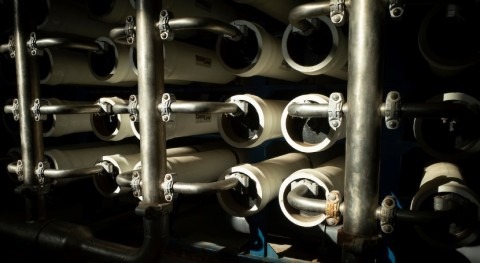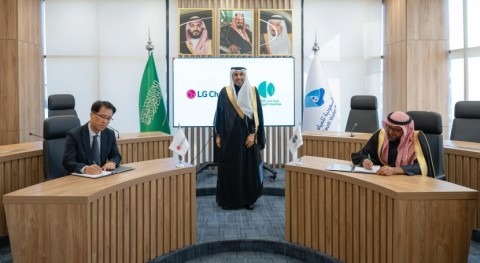A team from the Institute of Water and Environmental Engineering (IIAMA) of the Universitat Politècnica de València (UPV) in Spain has developed an innovative methodology to improve the analysis, design and operation of urban drainage systems in the face of torrential rainfall events. This breakthrough, published in the scientific journal Hydrology Research, responds to the growing challenges faced by cities due to climate change and the intensification of extreme weather events.
The study was carried out by Rosario Balbastre Soldevila as part of her doctoral thesis, under the supervision of Rafael García Bartual and Ignacio Andrés Doménech. Her proposal introduces a more precise tool to face the challenges posed by intense rainfall in urban environments, where rapid urban growth and increased soil impermeability make it difficult to manage these phenomena.
Urban hydrology and drainage: the challenge of impervious cities
Urban sprawl has radically transformed the hydrology of cities. The expansion of infrastructure, the paving of land and the reduction of natural spaces have led to a significant increase in the imperviousness of the land surface. As a result, rainwater that once infiltrated the ground now accumulates on the surface, increasing the risk of flooding in urban environments.
Climate change is intensifying extreme rainfall events in many regions of the world
Drainage systems designed in previous decades were not designed to cope with the magnitude of these changes. In many cities, sewerage networks and stormwater drainage systems have become obsolete in the face of population growth and new climate dynamics. As a result of this mismatch between infrastructure and current needs, extreme weather events, such as torrential rainfall, result in recurrent episodes of urban flooding.
This is compounded by climate change, which is intensifying extreme rainfall events in many regions of the world. Cities that traditionally did not suffer from major flooding are increasingly exposed to extreme events, highlighting the need for innovative urban water management solutions.
To mitigate these impacts, sustainable urban drainage strategies such as green infrastructure, temporary water retention systems and new rainfall prediction models are needed to anticipate the effects of urban growth and a changing climate.
A new approach to extreme rainfall simulation
The method developed by the IIAMA team seeks to overcome the traditional concept of the synthetic alternating block storm by introducing an alternative synthetic hyetograph: the G2P storm. As the researchers explain in the study: “Our model reproduces the characteristic temporal patterns of convective episodes of torrential rainfall in the Mediterranean region and helps to improve the design of drainage systems to help prevent flooding”.
The G2P storm (two-parameter gamma design storm, in reference to the mathematical function that represents it) is characterised by the occurrence of an early rainfall peak with a steep rise to maximum intensity, followed by a more gradual decrease until the end of the episode.
In this context, Intensity-Duration-Frequency (IDF) curves play a key role in assessing the resilience of urban infrastructure to these events. The researchers of the study note: ‘Our methodology facilitates the automatic generation of what are known as design storms based on updated IDF curves. This pioneering approach allows us to adapt the analysis of drainage systems to changing weather patterns, providing dynamic solutions based on up-to-date data.
.jpg)
The study develops a methodology to regionalise the two parameters ( i 0 , φ ) of the two-parameter gamma design storm (G2P). A three-step methodology is proposed to obtain the two parameters ( i 0 , φ ) for a given location. The results obtained in a case study show consistency with previous studies on maximum rainfall statistics.
Application in the Valencia region of Spain and global potential
The model developed has been applied in the Valencia region of Spain, a region where torrential rainfall is increasingly frequent due to its orography and the influence of the Mediterranean Sea. However, its potential is not limited to this geographical area, as the method allows the characteristics of heavy rainfall in other urban environments with similar climates to be parameterised.
The researchers explain that the parameter regionalisation methodology used in this study can be adapted to different regions of the world with convective rainfall patterns, facilitating its implementation in Mediterranean countries, tropical zones and areas prone to extreme rainfall.
In this sense, the study concludes that: “The new parameterisation, based on regional data and adaptable to areas with similar climatic characteristics, significantly improves the accuracy in the modelling and analysis of urban drainage systems”. The researchers emphasise that their work represents “a significant advance in the analysis of urban drainage systems in the face of climatic challenges, with the development of a synthetic storm that more faithfully reproduces the pattern of torrential convective rainfall and a methodology for regionalising parameters that allows its use throughout the territory of the Valencian region in Spain”.
This flexible approach opens the door to its application in cities all over the world, where the effects of climate change are intensifying torrential rainfall events and increasing the pressure on drainage infrastructures.



















